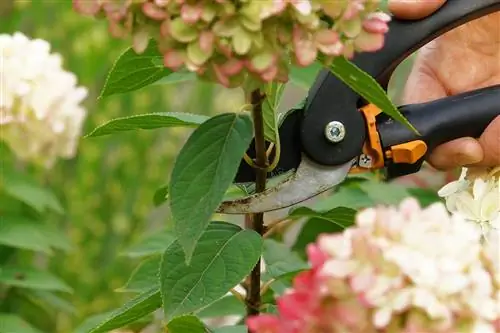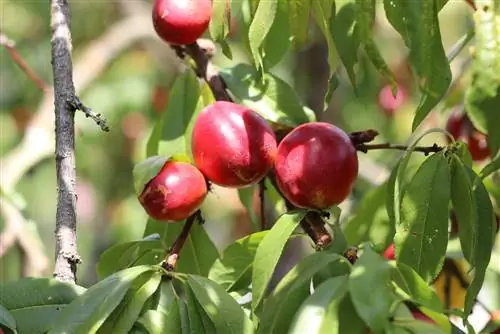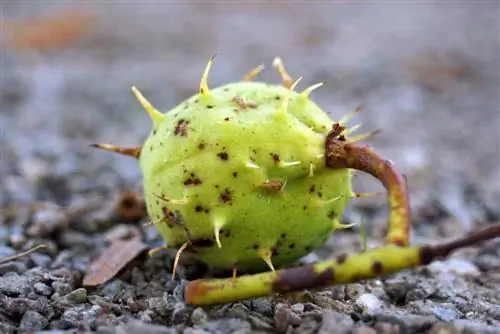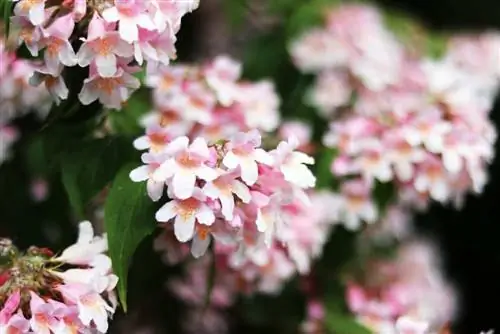- Author admin [email protected].
- Public 2023-12-17 03:39.
- Last modified 2025-01-24 12:45.
Hydrangeas produce extremely decorative flowers. However, this requires proper care, which also includes cutting. You can find out here whether this should take place in spring or towards the end of the year.
Basic rules
Regardless of whether pruning takes place in spring or just before winter, there are a few rules that must be taken into account. Otherwise, the measure could be more damaging to the plant than conserving its strength and increasing its ability to bloom.
These rules are the following points:
- cut on a dry, frost-free day
- pay attention to sharp blades
- create straight interfaces
- Carry out the measure in the morning if possible
- use clean cutting tool
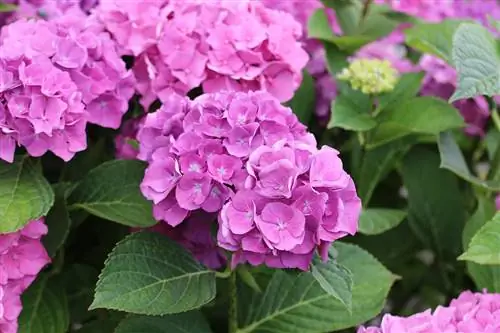
By adhering to these criteria, the interfaces can dry and close quickly. In addition, the risk of transmission and penetration of pathogens and parasites is reduced.
Spring
Before the hydrangea produces new shoots in spring, dead parts must be removed. Dead and dried branches can be radically cut off to just above the ground, as can last year's flowers that have faded. Depending on the climate and weather conditions, the measure can take place as early as February or March. The milder the winter, the earlier the pruning can be carried out.
Tip:
The dense and strong shoots are further promoted if fertilization is carried out after the cutting.
Summer
If a bud has withered or dried up, it should be removed even in the warm season. However, cutting back the hydrangea significantly while it is growing is not recommended. This is because a large part of the chlorophyll is lost. This means the plant can create fewer reserves. As a result, it is more susceptible to diseases and pests, especially - but not only - during the colder months.
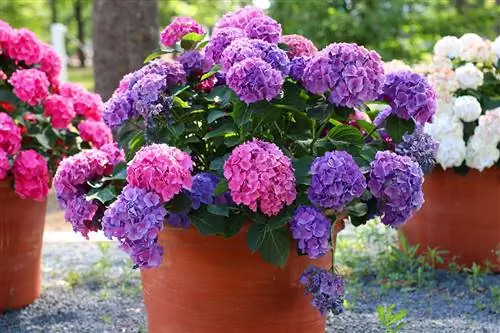
Since the plants are in the growth phase during this time, summer pruning can also reduce the formation of buds in the following year. However, a few points should also be taken into account here.
These are:
- whatever has faded is removed
- Do not cut in the blazing midday sun in summer to avoid burns
- extensive watering after the trimming
- shorten wilted and dead parts as much as possible
- Thin out plants at the end of summer or early fall
Autumn
It is ideal to cut off withered shoots and flowers towards the end of summer or beginning of autumn. By this time, stored nutrients have already passed into the roots. Removing the dead plant parts also provides protection against diseases and parasites.
Radical cut
Not every type of hydrangea can tolerate being radically pruned. Snowball hydrangeas - also known as Hydrangea arborescens - and panicle hydrangeas - known in botanical terms as Hydrangea paniculata - tolerate both pruning and radical pruning in early autumn. Greater caution should be exercised with other species, as they have usually already laid the buds for the current year the previous year.
Tip:
If the cutting has to be done due to illness, the cutting can definitely be done just above the ground. The clippings should be disposed of with household waste and the disease should be counteracted using appropriate means. In the case of a comprehensive infestation, this is the only way to save the plant, even if it means that it does not bloom for a year.

